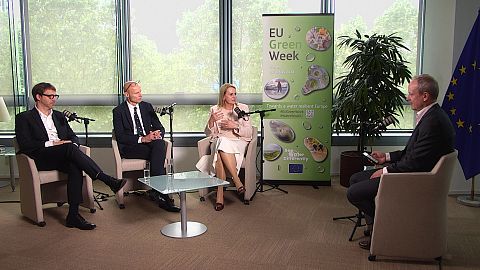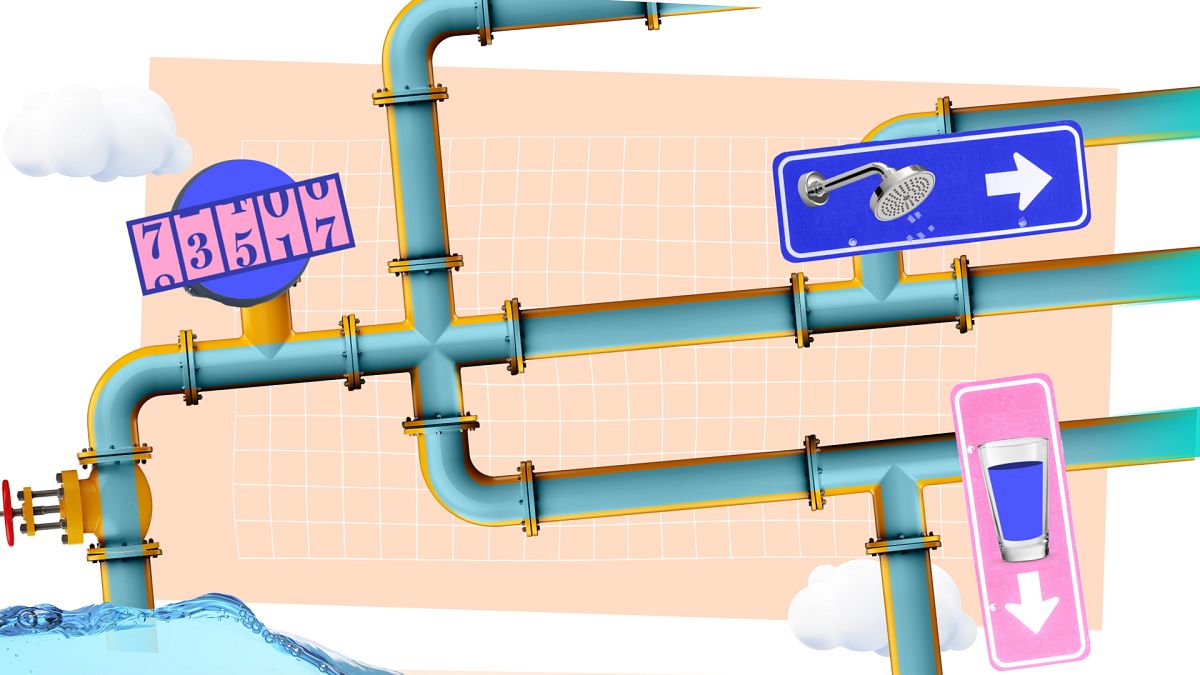Our water use continues to rise, from the food we eat to the technology we use. In this Crash Course, we'll explore the water footprint concept. How different industries contribute to it; asking what the EU is doing to make our consumption more sustainable
Water is a critical resource, not only for our direct consumption but also for nearly every product we use and consume. The concept of a water footprint measures the amount of freshwater we use to produce goods and services and is increasingly important given concerns over water scarcity, climate change, and overconsumption.
What is a water footprint?
A water footprint measures the total volume of freshwater used directly and indirectly by individuals or communities. It encompasses water used in daily activities such as drinking, showering, and the production of food, clothing, and other goods.
The water footprint is categorised into three types:
Green water footprint: The amount of rainwater used (either consumed or evaporated) in direct or indirect water use. This is particularly high in agricultural production.
Blue water footprint: The amount of freshwater used (either consumed or evaporated) in direct or indirect water use.
Grey water footprint: The volume of freshwater needed to dilute pollutants so that water quality standards are met. This is a feature of many industries, such as fuel, agriculture, and fashion.
Sectors with high water footprints
Producing everyday items often involves a substantial amount of water. For instance, making a cotton T-shirt or creating a kilo of chocolate. Below are the industries with the highest water footprints.
Agriculture
Agriculture is the largest consumer of water, with extensive use in irrigation, livestock maintenance, and food processing. For example, producing a kilogramme of beef requires around 15,000 litres of water, due to the large amount of water needed to grow feed for livestock. In addition, it takes 17,000 litres of water to produce a kilo of chocolate. According to statistics from 2019, Europe produced 3.7 million tonnes of chocolate, which equates to an eyewatering 63,625,200,000 litres of water.
Energy production
The energy sector also has a high water footprint. Significant amounts of water are used during the cooling processes in nuclear and fossil fuel power plants, and the cultivation of biofuel crops. Some forms of hydroelectric energy can consume over 1,000 times more water than wind energy.
Textiles and fashion
The textile industry, especially cotton cultivation and fabric dyeing, uses large volumes of water. It’s estimated the production of a single cotton T-shirt requires 2,700 litres of water, the same amount that is needed to meet one person’s drinking needs for 2.5 years.
Other sectors with high water footprints
Tech industry - uses water for manufacturing electronics and cooling data centres.
The beverage industry - relies on water for production, cleaning, and packaging.
Mining and metals - require water for extraction and refining processes.
The paper and pulp industry - uses water in processing and cleaning.
The automotive sector - needs water for assembling and painting vehicles.
The chemical industry - uses water in reactions, as a coolant, and in treating wastewater, contributing significantly to the greywater footprint.
Becoming More Water Aware
Understanding and managing our water footprint will be crucial if we are to address global water scarcity and promote sustainable water use. While reducing that footprint will require a collective effort from individuals, businesses, and governments, it will also require effective policies that can protect and preserve water resources for the future.
Since 2023, EU Companies with activities in Europe are required to disclose information on their water use and their water resources. The bloc has two corporate sustainability directives designed to mitigate the environmental impact of excessive water use and pollution.
Corporate Sustainability Due Diligence Directive
This directive requires companies to identify and address potential and actual adverse environmental impacts, including their water footprint, within their operations, subsidiaries, and value chains. Companies must mitigate their negative impact on human rights and the environment, including excessive water consumption or damage to ecosystems.
Corporate Sustainability Reporting Directive
This directive requires companies to disclose all major environmental factors, including their impacts and dependencies on climate, air, land, water, and biodiversity.
These directives aim to promote sustainable water management practices across industries and reduce the overall water footprint, ensuring a sustainable future for Europe’s water resources.
Some other key figures
The average EU citizen’s daily energy consumption requires 1,301 litres of water, enough to fill more than six large bathtubs.
The US is the biggest water consumer globally, with an average water footprint of 2,842 cubic meters per capita.
Getting wise to water
Euronews and the European Commission are partnering to promote the EU's Water Wise campaign, #WaterWiseEU. Our series, Water Matters, and the EU campaign aim to raise awareness about the increasing stress on Europe's water systems and the need for sustainable water management. Water Matters will delve into various water-related issues, highlighting the importance of protecting nature and ecosystems integral to the water cycle. Through engaging content, Euronews and the European Commission hope we can inspire individuals and communities to become #WaterWiseEU.
You might also like

Debate: How can we all do our bit and wise up about water resilience?

The cultural heritage of water: reconnecting with rivers through art














